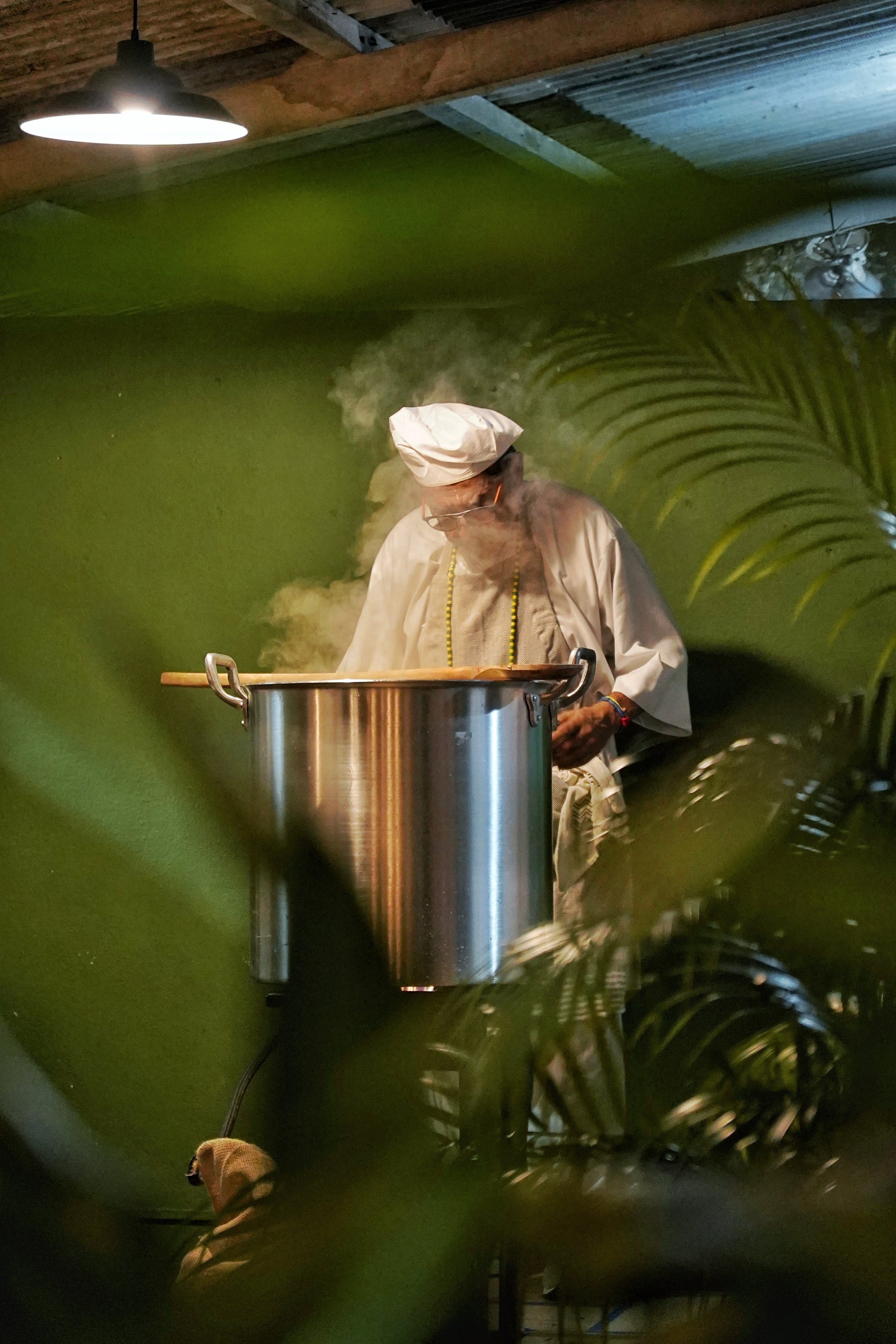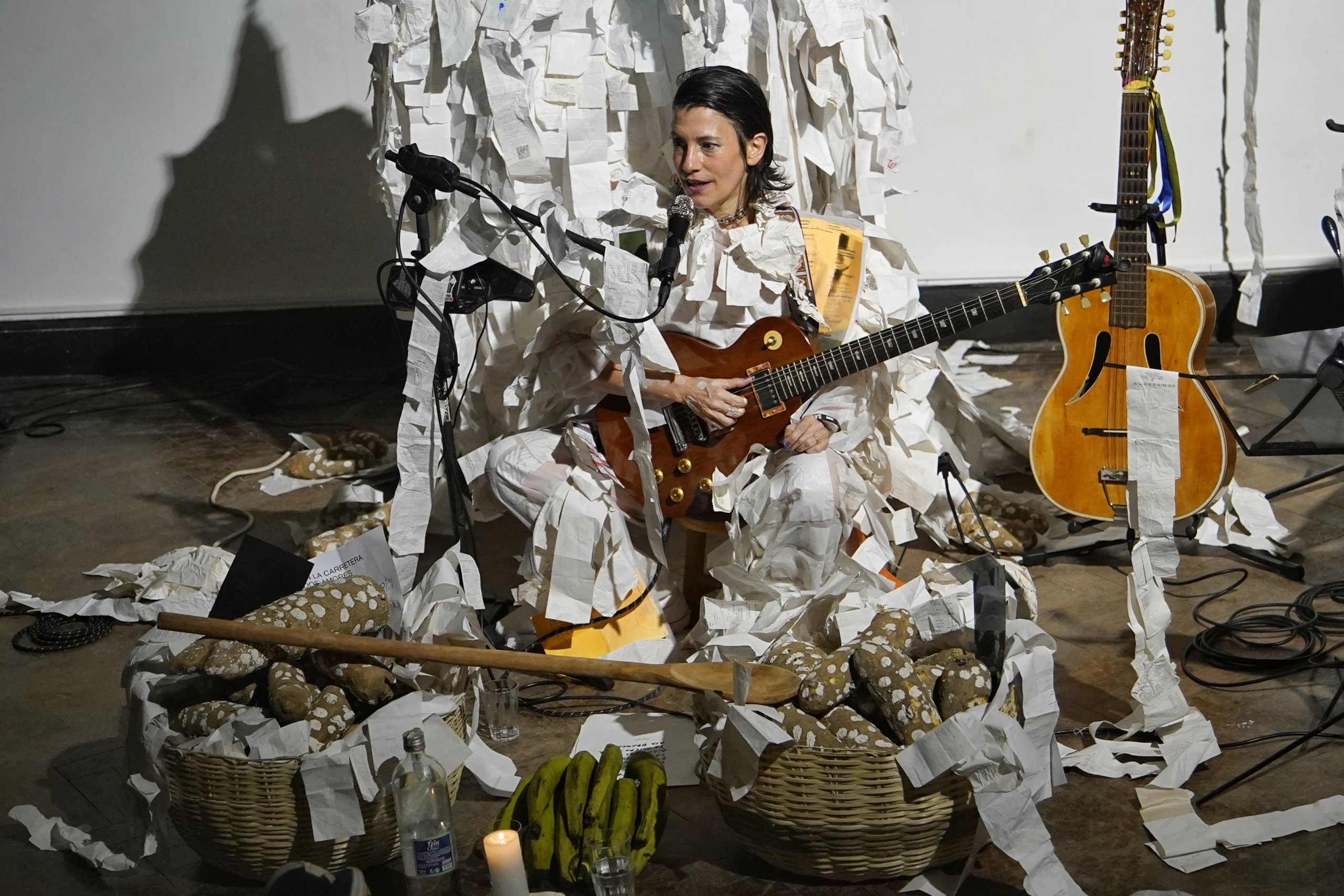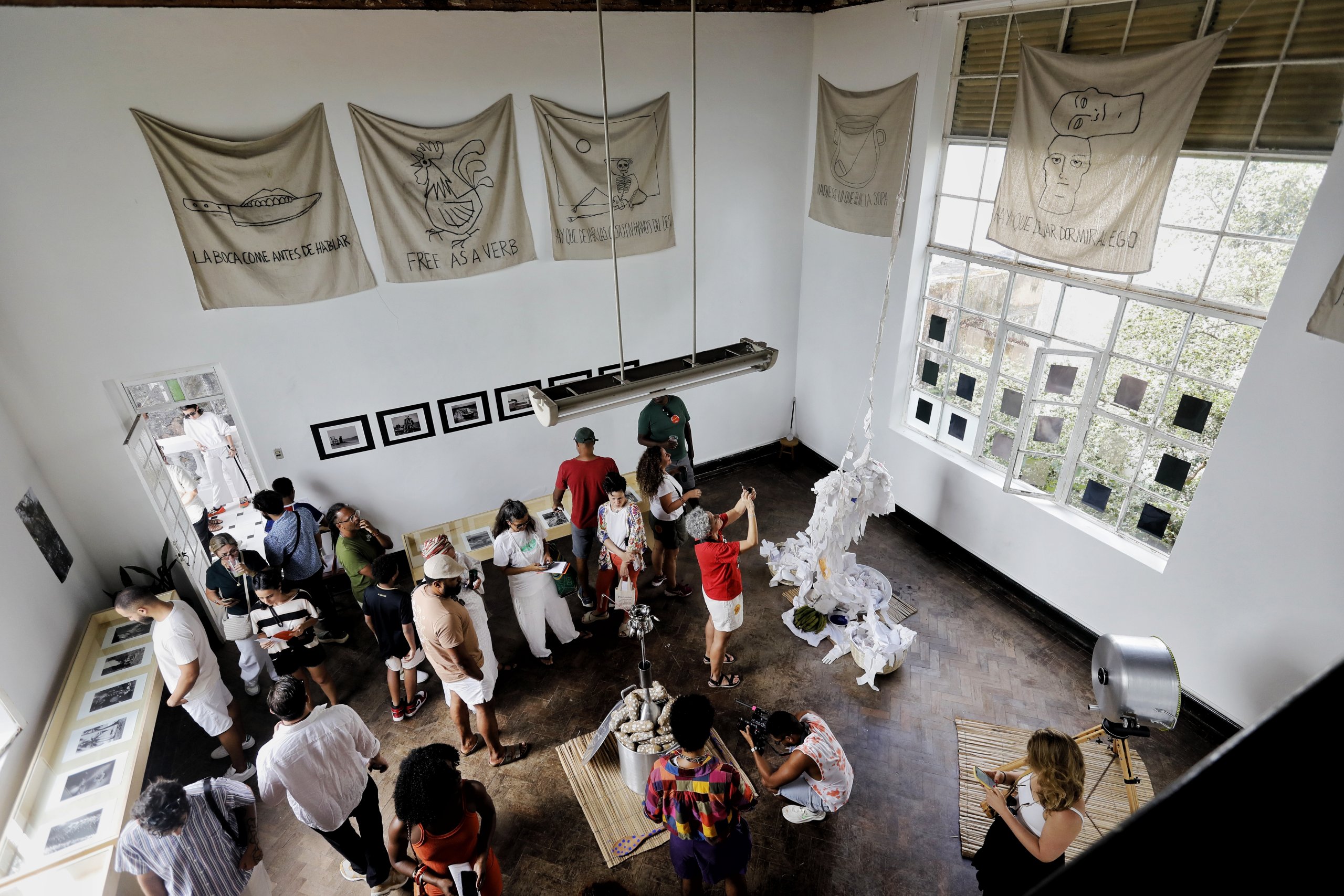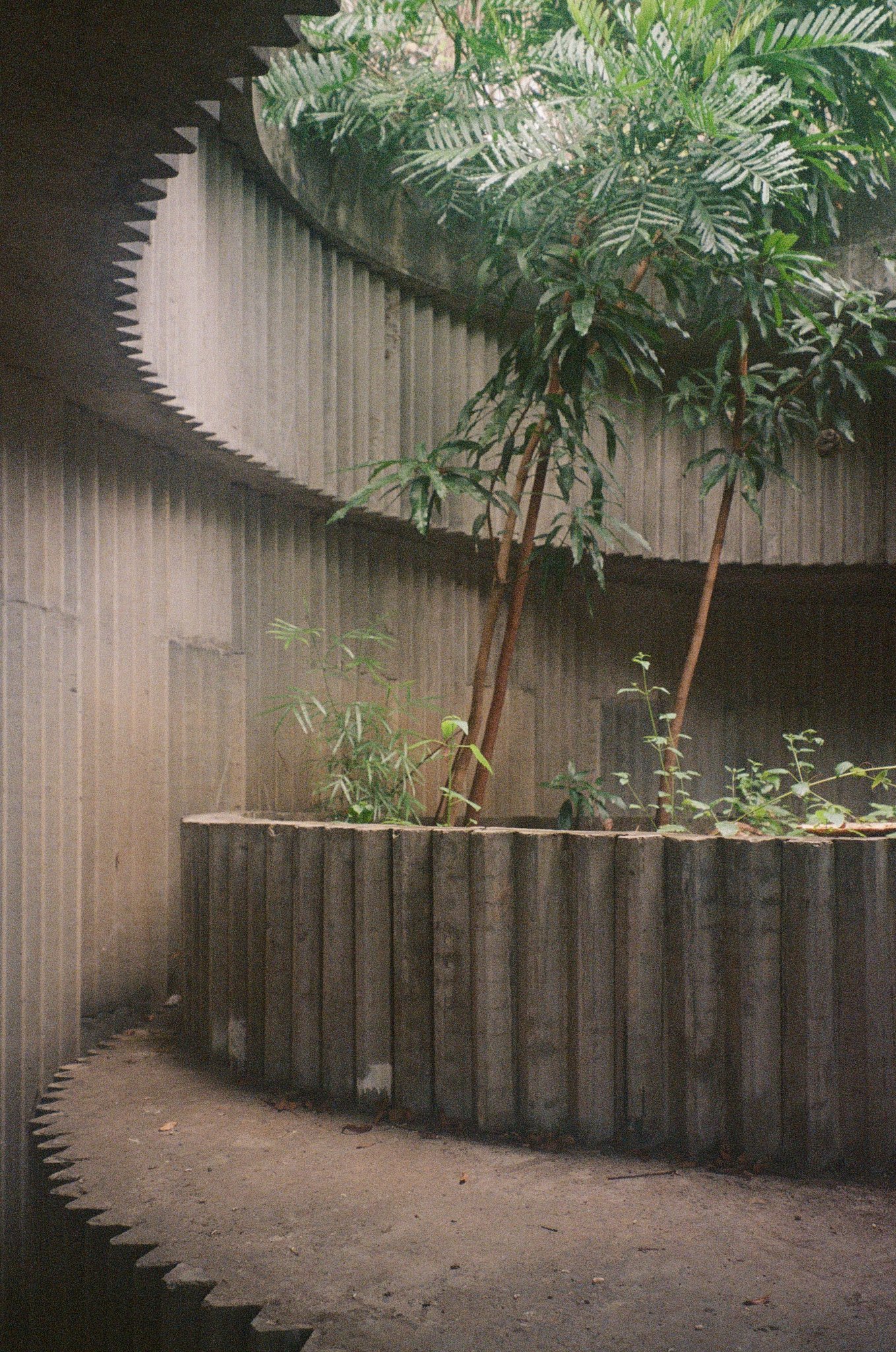Transmigração
To: Pivô Salvador
September 6, 2025 – October 4, 2025
Exhibition, Salvador
September 6, 2025 – October 4, 2025
Exhibition, Salvador

SALVADOR | For the fourth edition of OtherNetwork’s experimental curatorial project conceptualised in partnership with ifa, renowned Brazilian non-profit art space Pivô invited Puerto Rican initiative Beta–Local to guest curate a programme at their newly opened space in the Bahian capital. Here, curator Pablo Guardiola reviewed the process.
In the liner notes of Caetano Veloso (1967), Caetano wrote: “Gil, hoje não tem sopa na varanda de Maria.” (Gil, today there is no soup at Maria’s varanda). In the sixties, they said, parties were held there. At those parties, there was always soup. Actress Maria Moniz, daughter of the owners of Casa Boulevard and current resident of part of the house, organized gatherings on the balcony. Students and artists from the Theater School of Bahia, the Dance School, and the Bossa Nova scene attended – Tom Zé, Caetano Veloso, Gilberto Gil, Gal Costa, Maria Bethânia, Orlando Sena, Glauber Rocha, and Helena Ignês, among many others. One could argue that soup wasn’t the only thing simmering: an experiment, an impulse, a germ was cooking as well. Tropicália was born, in part, from those broths.
In the Caribbean, we feel comfortable working with and from traces – across multiple times, moving back and forth in a perpetual zigzag. A broth as a base. Another possible kind of historical archive, a Soup of Rumors.
That is how Transmigração was born. Not necessarily as an exhibition, but as a space of listening, of movement, of collective gestures: one person carries another, one object carries another. A weaving of memory, territory, and presence; with Casa do Boulevard as the anchor for simultaneous acts of action and thought between Salvador da Bahia and Puerto Rico.
I think of this text as a chronicle of our journey and project. They are fragments, but, as Vila-Matas writes in Canon de cámara oscura: “Fragments! They are not, as so many believe, just a part of the whole, but a very important part of the whole.”
Years ago, culinary critic and graphic artist Paco Villón described his friend, photographer Jochi Melero, as the ‘Wizard of Soups’, someone capable of making an excellent soup from any ingredient. And so, at Beta-Local, Jochi prepared a Caldo Santo, a traditional soup from Loíza whose recipe varies from family to family. The cooking pot was spiritually charged and shared. The pot remained marked by the ritual. Later, it was transformed into a pinhole camera. With it, the island was traversed, and Jochi captured images on 8x10 inch black and white film sheets. The pot that once held a broth became a vision device: a container of light, memory, and transformation. This cauldron-camera, along with some of the photographs it captured, was included in the project at the Casa do Boulevard atelier.
In Salvador, the Sopa de Rumores begins at the Feira de São Joaquim. Ingredients are sought. Utensils gathered. Jochi—who is also a babalawo (priest in the Yoruba tradition)—is in his element. The Soup of Rumors moves from Caldo Santo to Caldo de Todos os Santos. As the soup simmers, MIMA invokes through sound; Yarimir Cabán becomes MIMA. She is joined by Julio Caldas on guitar and viola caipira.


MIMA lived in São Paulo in 1994, an experience anchored deeply in her becoming. From there her story moves through Río Piedras, Santurce, Santo Domingo, and back to Santurce. Collaborators, lovers, encounters, ruptures – pure relation. More traces, the ones we love so much. This is an experience grounded in context, but above all in sonic and visual aesthetics. She begins her set inside a cone of papers suspended from the atelier’s high ceiling, then emerges from it—a piece by William Murphy. After the set, the piece remains as a sculpture in the space, paper soaked in water. MIMA becomes Muchos MIMAS. A body that was voice, a voice that becomes object.
We met with Yarimir one afternoon at Beta-Local to talk about the project. We discussed possibilities and collaborations. Titles and their implications, her doubts and ours. Transmigration: the action and effect of transmigrating. To transmigrate: said of a soul, to pass from one body to another, according to those who believe in metempsychosis. (This is the one that interests us: the act of transmigrating Beta-Local into Pivô Salvador.)
The meeting lasted seven hours. We drank a lot of black coffee, which eventually blended with Palo Viejo rum. We left somewhat seasoned, with a chaos of ideas. At dusk, when I arrived at my home in Old San Juan, the electricity was out (as often happens on the island). It made no sense to stay alone in the dark. I went to one of my usual bars, greeted Sergio, and it wasn’t long before Fuego, the new song by MIMA and Villano Antillano, played. It made me smile.
Before her set at the atelier, we had a preview at Beta-Local, where several intimate rehearsals took place as Yarimir calibrated her presentation. The consensus was that we witnessed something special. This was also where her collaboration with William Murphy took shape, and William’s collaboration with us. Inspired by multiple references, William created a piece made from all the paper receipts from Yarimir’s purchases since 2020.
William arrived in Brazil with a small carry-on suitcase. Inside he brought Muchos MIMAS, a garment piece that is also a sculpture. Astonishingly collapsible, these little bits of paper contain an entire career in ascendance. Like many elements of this project, William arrived by way of a signal – this time from MIMA. The pieces kept falling into place, and William had to come to Salvador, he told us. Together, we realised how strongly this city speaks to the Caribbean.
The Igreja do Nosso Senhor da Vera Cruz on the island of Itaparica was built by the Jesuits and is the third-oldest Catholic church in Brazil. Today it is a ruin, held together by a massive tree, a gameleira. The gameleira is a sacred tree in candomblé, which transformed the former Catholic church into a place of worship for the orixás. Specifically, the gameleira in Brazil becomes the dwelling of Iroko. In Yoruba lands, Iroko inhabits another tree, also commonly called Iroko (Milicia excelsa or Milicia regia). Rumor has it that Édouard Glissant would say that when asked to draw a tree, he would draw a forest. This gameleira suggests a forest. Iroko, it is said, is also a forest – within and beyond physical space – one that includes, literally and metaphorically, all beings who inhabit the woods.
Transmigração was never conceived as a straight line. At Beta-Local this is not arbitrary; it is methodology. In the Caribbean one must be predisposed to change. That quality is not always explicit when defining cunning or bravery from our shores.

The original plan was to stage a version of La caída del alfiler, a piece by Michael Linares in collaboration with Fabián Vélez, at the Ladeira da Misericórdia (the iconic complex designed by architect Lina Bo Bardi in Salvador, now known as Pivô Coaty). In this piece, a sound source is directed at a group of plants. The plants respond to the sound while phytoacoustic instruments translate the electrical signals emitted by the plants into sound. Through electromagnetic sensors attached to leaves and stems, bioelectrical variations are transformed into voltages that interact with a modular synthesizer.
The photos I brought are a sample of these interests from my coordinates. Along with mangoes loaded with references, I bring to the conversation fragmented images of the nearly millenary Guánica guayacán. This tree lives in the southwest of Puerto Rico and has witnessed many things. For years I have moved through the dry forest of the south, as well as the moist forests of the island’s center. I spend time and document this exuberant flora. I stubbornly insist on the impossibility of fully photographing these trees and forests. Here too, fragments are an essential part of the whole.
Ultimately, due to local bureaucracy, it was not possible to stage a version of La caída del alfiler in Pivô Coaty. For Fabián, the trip between Puerto Rico and Salvador became a knot of impossible connections and endless layovers. He didn’t arrive, and his contribution transmigrated into a yam. In Puerto Rico, a yam connected to the modular synthesizer helped compose a sound piece made from recordings gathered during the making of the Caldo Santo prepared by Jochi. Likewise, Michael adapted the utensils and the cauldron used in the making of the Caldo de Todos os Santos and turned them into a sculpture that dialogues with an Opá Òsanyìn. The tablecloths that covered the tables used during this dinner bear drawings he made, partly inspired by the mosaic phrases at the Igreja e Convento de São Francisco. These pieces were presented in the atelier along with sixty yams that populated the sculpture and the space.
This project was not a transaction; it is a space made of listening, movement, and collective gestures. Here, trust is key, and nothing would have been possible without the direct interactions between Pivô, Beta-Local, and OtherNetwork. This may seem obvious, but it is not always the case in the art world, often inclined toward the instrumentalization of relationships.
A weaving of memory, territory, and presence. The tools remain, as does the human presence. Spoons, cloths, pots, photos, drawings, sounds, weavings, people. Not as remnants but as activated artifacts bearing traces of use and shared memories. Here, to curate is to summon memory. The only thing cured was the cauldron. Nothing is isolated: everything is interwoven. Everything overlaps.
Transmigração is not a static project. It is a living organism because it is made from relationships between people. Our approach to gathering is a way of working, a methodology. A way of thinking the curatorial as resonance. Another way of inhabiting bodies, languages, memories, and territories. Everything still cooking. Everything still to come.
See more at https://transmigracao.othernetwork.io/